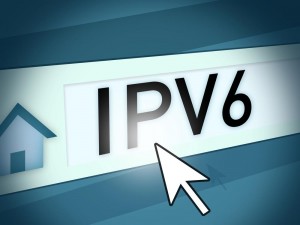 According to a new paper by the The ICSI Networking and Security Group as well as Google’s own statistics, IPv6 adoption has slowly started showing signs of growth reaching over 4% of all web traffic for the first time.
According to a new paper by the The ICSI Networking and Security Group as well as Google’s own statistics, IPv6 adoption has slowly started showing signs of growth reaching over 4% of all web traffic for the first time.
What is IPv6? IPv6 stands for Internet Protocol version 6 and is the latest version of the Internet Protocol (IP), the communications protocol that provides an identification and location system for computers on networks and routes traffic across the Internet. IPv6 was developed by the Internet Engineering Task Force (IETF) to deal with the long-anticipated problem of IPv4 address exhaustion. IPv6 is intended to replace IPv4, which still carries the majority of Internet traffic worldwide. IPv4 was officially exhausted back in February 2011.
The main advantage of IPv6 over IPv4 is its larger address space. The length of an IPv6 address is 128 bits, compared with 32 bits in IPv4. The address space therefore has 2128 or approximately 3.4×1038 addresses. This would be about 100 addresses for every atom on the surface of the earth and almost four /64s per square centimeter of the planet.
The authors of the new paper which include people from the University of Michigan, International Computer Science Institute and Verisign Labs focused on content providers, service providers, and content consumers got their hands on as many as half of the packets flowing across the Internet at certain times, counting how many of those packets were IPv4 and how many were IPv6. For each of these, the first step toward sending and receiving IPv6 packets is to get IPv6 addresses. Five Regional Internet Registries (RIRs) give out both IPv4 addresses and IPv6 addresses. Looking at 10 years of IP address distribution records, it turns out that prior to 2007, only 30 IPv6 address blocks or address prefixes were given out each month. That figure is now 300; the running total is 18,000. IPv4, on the other hand, reached a peak of more than 800 prefixes a month in 2011 and is now at about 500. Although IPv6 is close on a monthly basis, IPv4 had a big head start and is currently at 136,000 prefixes given out.
The researchers also looked in more detail at IPv4 and IPv6 routing and network topology, which showed that IPv6 is “largely deployed” in the core of the Internet (the big service providers). That’s not so much the case at the edges, where the content and the consumers live. Out of the Alexa top 10,000 websites, currently about 3.5 percent are IPv6-enabled. This number was less than half a percent in early 2011 before World IPv6 Day. Google tracks the number of its users that have IPv6 enabled, a figure that has been going up by a factor 2.5 every year the past few years and currently is at over 4%.
Although this is still a slow rate of adoption it is still progress. How long will it take for it to eventually become more main stream is still unknown but at some point there is likely to be a tipping point leading it to grow exponentially.
Discussion
No comments yet.